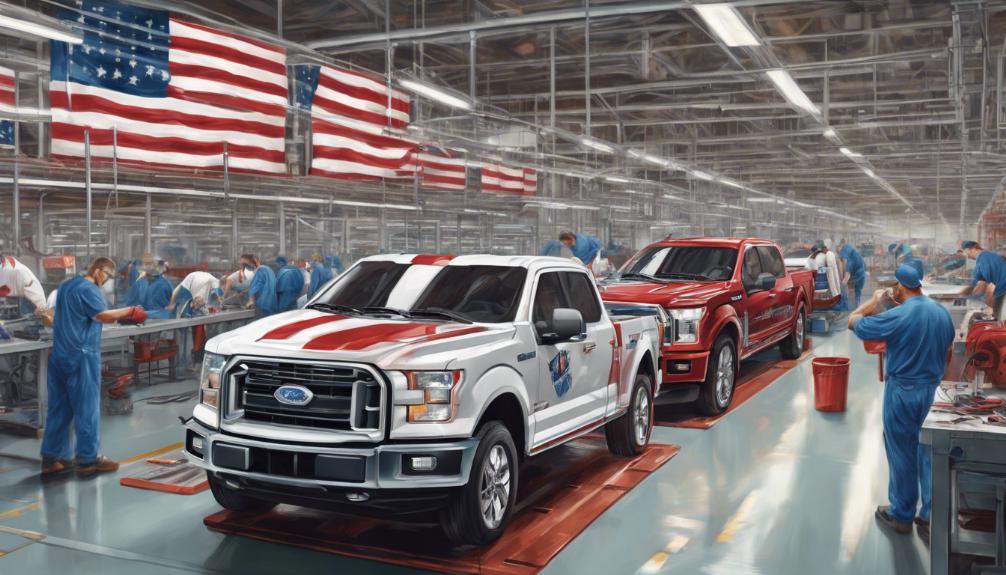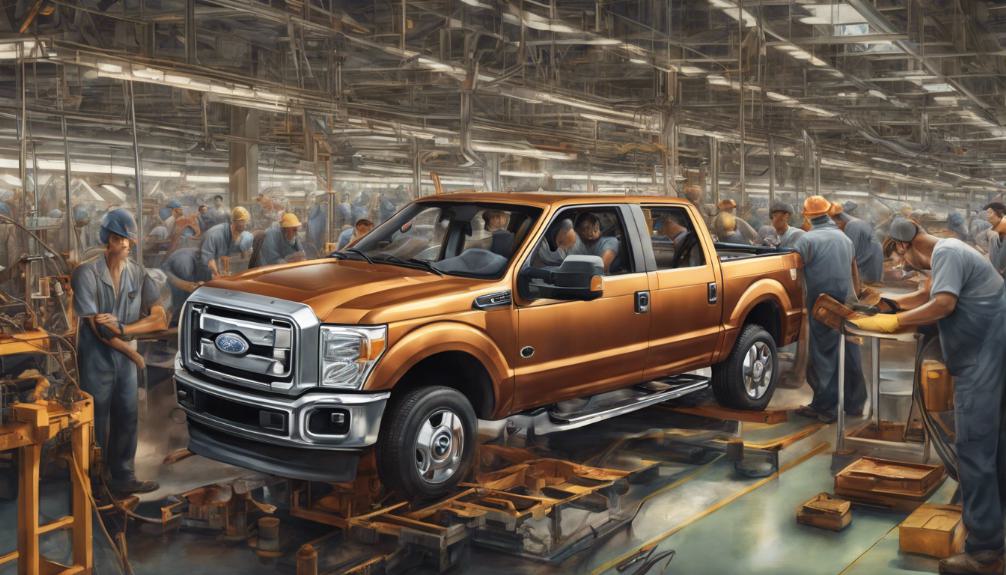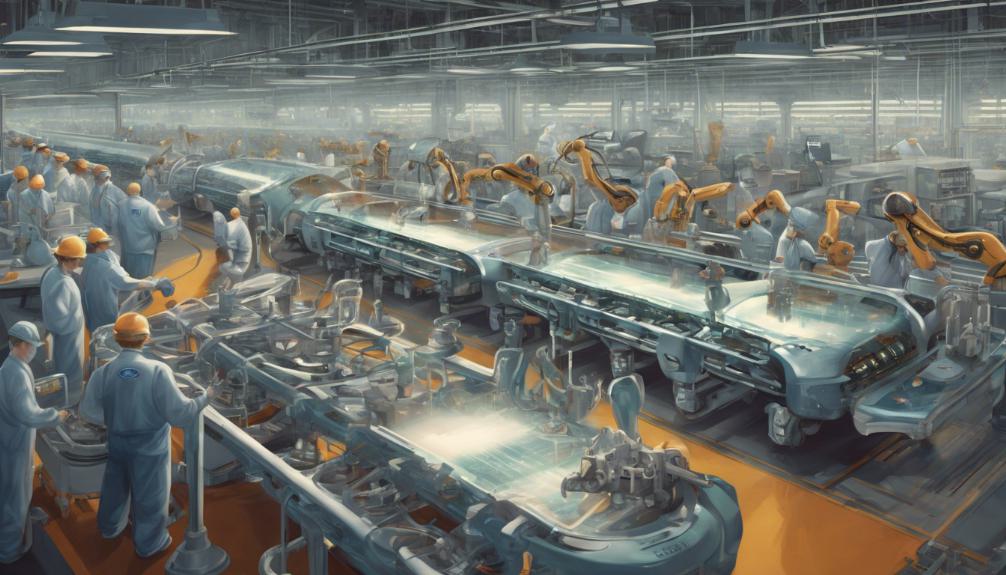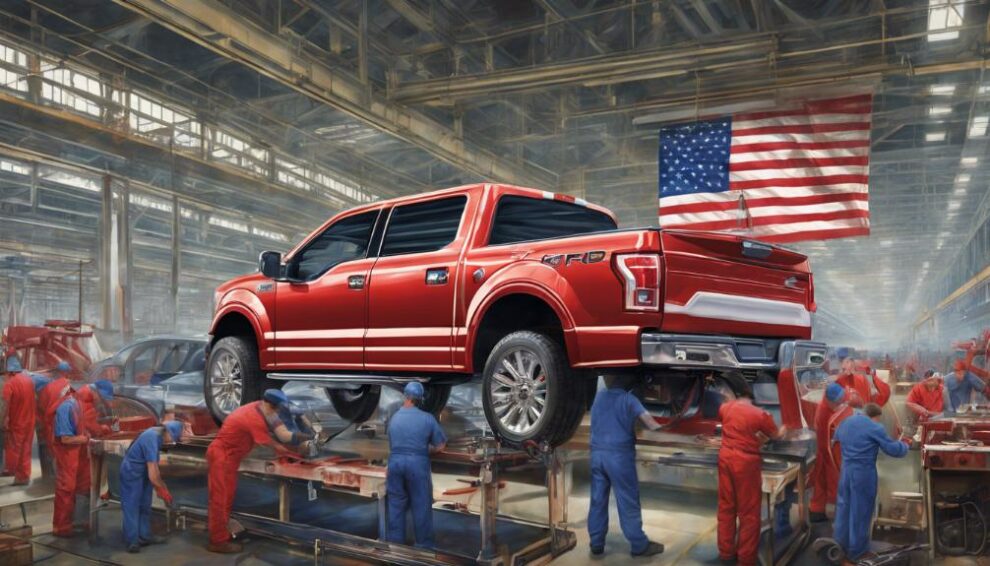To verify if your Ford is authentically American-made, analyze the intricate global production and supply chain connections influencing manufacturing choices.
Ford’s operations span the globe, with potential international component incorporations. Trade pacts and tax policies play roles in facility locations.
Awareness of these factors is essential in understanding the automotive landscape. Brand loyalty and supply chain transparency influence consumer practices. Informed decisions align with values.
Awareness of production origins impacts purchasing trends. As automakers evolve due to regulations and technology, consumer knowledge shapes their perceptions.
Discovering these manufacturing details reveals the complex automotive world.
What You Need to Know
- Ford’s manufacturing locations are global, impacting vehicle origins.
- Trade agreements and tax policies influence Ford’s manufacturing decisions.
- Modern cars contain a fusion of international components.
- Consumer awareness of supply chain impacts purchasing decisions.
- Understanding Ford’s locations reveals complex trade dynamics.
The American-Made Index Overview

When exploring the American-Made Index Overview, you’ll find that it ranks vehicles based on their final assembly location.
This index explores the supply chain and manufacturing practices of different car manufacturers.
The economic implications of where a vehicle is assembled can be significant, impacting the labor force and local economies.
Understanding the American-Made Index involves recognizing the intricate web of suppliers, production facilities, and labor that contribute to the final product.
Ford’s Manufacturing Locations
Ford’s manufacturing locations play a crucial role in understanding the intricacies of the automotive supply chain and how international components are integrated into domestically assembled vehicles. Here are some key points to keep in mind:
- Supply chain: Ford’s production facilities are spread globally, with parts often sourced from different countries.
For example, the 2017 Fiesta was assembled in Mexico but utilized components like a Brazilian engine and Mexican transmission. This highlights the interconnected nature of the automotive supply chain.
- Trade agreements: Trade agreements between countries can impact where Ford chooses to manufacture its vehicles.
For instance, President Trump’s focus on bringing jobs back to the U.S. influenced Ford’s decisions, leading to plans to create more American jobs.
Also, factors like tax policy reforms can also affect manufacturing locations, as seen with Ford’s decision to withdraw plans for a Mexican assembly plant.
- Complexity: Even vehicles built domestically can contain international parts, showcasing the complexity of modern automotive manufacturing.
Understanding Ford’s manufacturing locations provides insight into how trade agreements and supply chain dynamics shape the production of vehicles.
Impact of Global Production

Global production intricately weaves together diverse components from various countries, shaping the modern landscape of the automotive industry.
The automotive sector‘s reliance on global sourcing has led to increased manufacturing complexity, with cars like Ford’s 2017 Fiesta exemplifying this trend.
With parts from Brazil and Mexico, the Fiesta highlights how vehicles today are a fusion of international elements. The impact of global production is profound, influencing decisions by governments and automakers alike.
For instance, President Trump’s initiatives aimed at boosting American jobs have spurred companies such as Ford, Fiat-Chrysler, and GMC to reevaluate their production strategies.
The intricate web of global supply chains has made it challenging to pinpoint a car’s exact origins.
Even models like the 2017 Ford Focus, assembled domestically, may incorporate just 40% of parts from the U.S. and Canada.
This reality underscores the interconnected nature of the automotive industry and the necessity of considering global factors in manufacturing decisions.
As you navigate the intricacies of modern automotive production, understanding the nuances of global sourcing is essential for comprehending the intricate tapestry that shapes the cars we drive today.
Consumer Perception and Purchasing Decisions
Taking into account the influence of consumer perception on purchasing decisions regarding American-made Fords is essential in today’s automotive market. When considering buying a car, here are some key points to keep in mind:
- Brand Loyalty: Consumers often develop strong connections to certain brands based on their perception of quality, values, and origin.
Understanding where a Ford is made and how much of it’s American-made can influence brand loyalty.
- Supply Chain: Transparency about a car’s supply chain and manufacturing locations can impact how consumers view the brand.
Knowing the percentage of American-made parts in a Ford can affect trust in the product and sway purchasing decisions.
- Consumer Awareness: Being informed about the manufacturing locations and origins of the vehicle you’re interested in can greatly influence your buying choice.
The more you know about where a Ford is made, the better equipped you’re to make a decision that aligns with your values and preferences.
Future Trends in Automotive Manufacturing

Looking ahead, automotive manufacturing is set to undergo significant transformations driven by evolving policies and advancements in technology.
Supply chain trends and automation are expected to revolutionize the industry, streamlining production processes and enhancing efficiency.
Sustainability will play an essential role, with a growing focus on electric vehicles to reduce carbon emissions and promote environmentally friendly practices.
Automakers will need to adapt to these changes by incorporating more renewable materials and energy-efficient technologies into their manufacturing processes.
Understanding the international supply chain will become even more critical as globalization continues to shape the automotive industry.
By staying informed about sourcing, production, and distribution practices, automakers can navigate complex trade agreements and economic considerations effectively.
Consumer awareness of where vehicles are manufactured and the origins of their parts will increase, influencing purchasing trends and brand perception.
Transparency in reporting the origins of car parts will be essential for consumers to make informed decisions about purchasing vehicles in the future.
As an Amazon Associate we earn from qualifying purchases.










